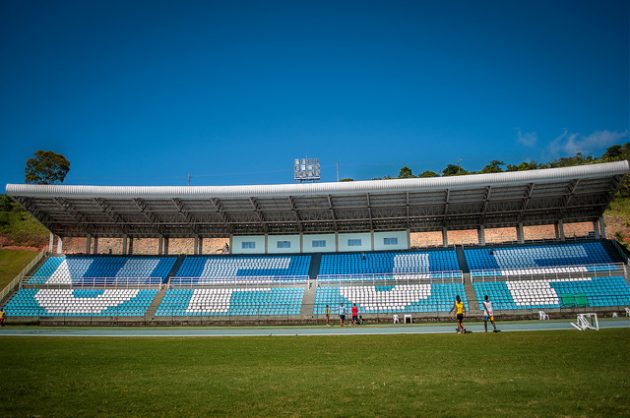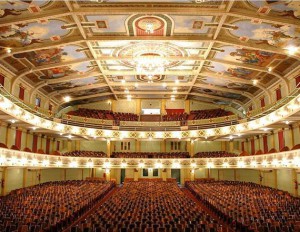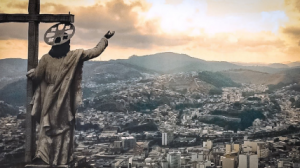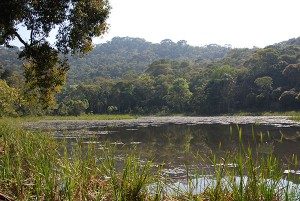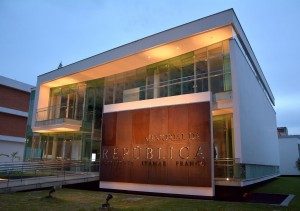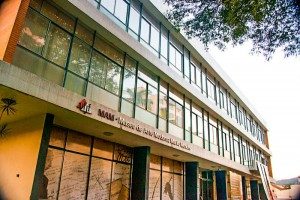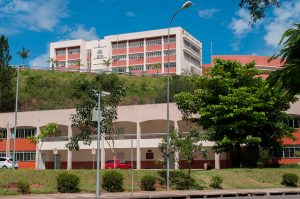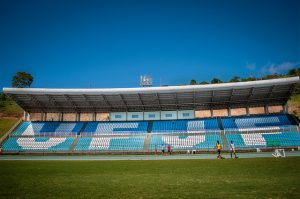Juiz de Fora is located in the Zona da Mata region of the state of Minas Gerais, which borders the states of São Paulo, Rio de Janeiro, Espírito Santo, Bahia, and Goiás. It is one of the Brazilian cities with the best quality of life. With a population of around 500,000 inhabitants, the municipality is a reference in health and education, has a low crime rate, high life expectancy, and it is considered one of the best cities to work in Brazil. Thus, it stands out in the Human Development Index ranking of the United Nations – UN.
Furthermore, it is the fourth largest city in the state of Minas Gerais, behind Belo Horizonte, Contagem, and Uberlândia and it is strategically located between the largest consumer markets in the country, such as São Paulo and Rio de Janeiro.
Tourist attractions in the city:
Cine-Theatro Central
Acquired by UFJF in 1994, it is one of the main cultural assets of Juiz de Fora and considered one of the most beautiful theaters in Brazil, with references to art nouveau. Inaugurated in 1929, the theater has hosted the most important names in Brazilian music, theater, and dance. Its large seating capacity and stage designed to accommodate a variety of shows make the Central a privileged space and one of the few of its kind currently open in the country. The Guided Visit project allows the public to have the opportunity to learn about its history and architectural and artistic beauty.
Mirante do Morro do Cristo (Christ Hill Viewpoint)
The Morro do Redentor, more popularly known as Morro do Cristo, is one of the highest points in the city and offers a beautiful panoramic view of Juiz de Fora. The location is highly sought after by people who enjoy practicing physical activities in contact with nature, as there are many hiking tracks in the area.
Parque da Lajinha (Lajinha Park)
One of the green retreats in Juiz de Fora, Lajinha Park is one of the most visited tourist attractions in the city. It brings together families, friends, and couples who want to stroll, walk, have picnics, or even go paddle boating on the lake.
Jardim Botânico (Botanical Garden)
Located in Mata do Krambeck, it is a remnant of the Atlantic Forest in the middle of the urban area. Visitors have the opportunity to exchange knowledge about socio-biodiversity through environmental education activities.
Centro Cultural Bernardo Mascarenhas (Bernardo Mascarenhas Cultural Center)
It is a cultural center coordinated by FUNALFA that offers galleries, a video library, a performance hall, space for rehearsals and meetings, workshops, courses, and various other attractions to artists and the public. It was founded thanks to the “Mascarenhas, My Love” movement, which began in 1983 and brought together a multitude of artists to transform the building of the former Bernardo Mascarenhas Textile Company into a space that proliferates culture.
Museu Mariano Procópio (Mariano Procópio Museum)
The Mariano Procópio Museum is a symbol of the preservation of Brazilian history and it is the result of the collection maintained by Alfredo Ferreira Lage (1865-1944), who, throughout his life, gathered one of the most important artistic, historical, and natural science collections in the country.
Memorial Presidente Itamar Franco (President Itamar Franco Memorial)
One of the most important public figures in Brazilian political history, Itamar Franco, the former president of Brazil (1992-1994), is honored by the city of Juiz de Fora, where he served as mayor. Since 2015, the Federal University of Juiz de Fora, through the Office of Culture, maintains the building that houses the documentary and audiovisual collection about the history of Itamar Franco.
Museu de Arte Murilo Mendes (Murilo Mendes Art Museum)
Belonging to the Federal University of Juiz de Fora (UFJF), the museum houses the library and visual arts collection of Murilo Mendes (1901-1975), a renowned poet and writer from Juiz de Fora considered one of the most important in Brazil. The museum features 150 works by national and foreign artists, such as Portinari, Guignard, Picasso, De Chirico, Max Ernst, and presents several annual exhibitions. Mendes also had a significant presence in the artistic, cultural, and intellectual environment of Brazil and Italy, where he lived in the 1960s and 1970s.
Nearby cities to visit:
Lima Duarte (Minas Gerais)
It is a tourist destination recommended for those who want to be in contact with nature. The district of Conceição de Ibitipoca is home to one of the most beautiful ecological parks in the region. Ibitipoca State Park has countless waterfalls, caves, and trails. There are also other waterfalls outside the park, such as Cachoeira do Sossego, Cachoeira do Arco-Íris, and Cachoeira da Garganta. In the city, it is also possible to take a tour to the Train Station, a construction from the times when Brazil was still a colony of Portugal, at the height of gold mining in Minas Gerais.
São João Del Rei (Minas Gerais)
It is one of the Minas Gerais cities that are part of the Estrada Real route. The place is a perfect spot to learn more about the history of gold mining in Minas Gerais and the close relationship between colonial and imperial Brazil and the Catholic Church. It is common to find several churches with gold ornaments and there are also famous works by Aleijadinho. It is also possible to take a steam locomotive ride, called Maria Fumaça, to Tiradentes, another historic destination.
Ouro Preto (Minas Gerais)
It is a colonial city known for its history during the gold mining era in Brazil and its baroque architecture. The Historic City was the first Brazilian site considered a World Heritage Site by UNESCO, a title it received in 1980.
Mariana (Minas Gerais)
It was the first village, city, and capital of the state of Minas Gerais. In the 17th century, it was one of the largest gold-producing cities for the crown. Strolling through the streets of the Historic Center, among its mansions and churches, is like stepping back in time. Visitors can also visit an old gold mine.
Petrópolis (Rio de Janeiro)
It is known as the Imperial City since the local architecture preserves the features of the Portuguese royal family that passed through there in the 19th century. The main tourist attractions in the area are the Imperial Museum, the Cathedral, the Casa de Santos Dumont, the Wax Museum, and the former Quitandinha Casino.
ABOUT UFJF
The Federal University of Juiz de Fora (UFJF) is ranked among the top 1,000 universities in the world and was elected the 70th best university in Latin America and the Caribbean, according to the Latin America University Rankings 2022 – a list developed by the international organization Times Higher Education (THE). Additionally, according to another ranking conducted by the same platform, UFJF achieved the 14th position among 52 higher education institutions in Brazil in its first participation in the Times Higher Education, considered one of the main university rankings in the world. By positioning itself as a scientific, economic, and cultural hub, this public and free institution has consolidated its national and international recognition.
Founded on December 23, 1960, the institution currently offers more than 90 undergraduate courses, 44 master’s programs, and 26 doctoral programs, as well as specializations and residencies in the fields of health, management, and teaching. The institution is also responsible for João XXIII Application School, which offers primary and secondary education, and the University Hospital, managed by the Empresa Brasileira de Serviços Hospitalares (Ebserh (Ebserh).
With its two campi in Juiz de Fora and Governador Valadares, UFJF provides qualified education to 26,000 students through the work of more than 1,600 professors and 1,500 administrative and technical staff, with 18 libraries, over 370 laboratories, and student support services. As a research and outreach center, UFJF seeks to educate ethical and critical professionals of high quality for both the job market and academia.
UFJF also manages and promotes cultural spaces in Juiz de Fora, such as the Murilo Mendes Art Museum, Cine-Theatro Central, and the Itamar Franco Memorial, as well as the Jardim Botânico and the Sciences Center, which are spaces for environmental, cultural and scientific education.

